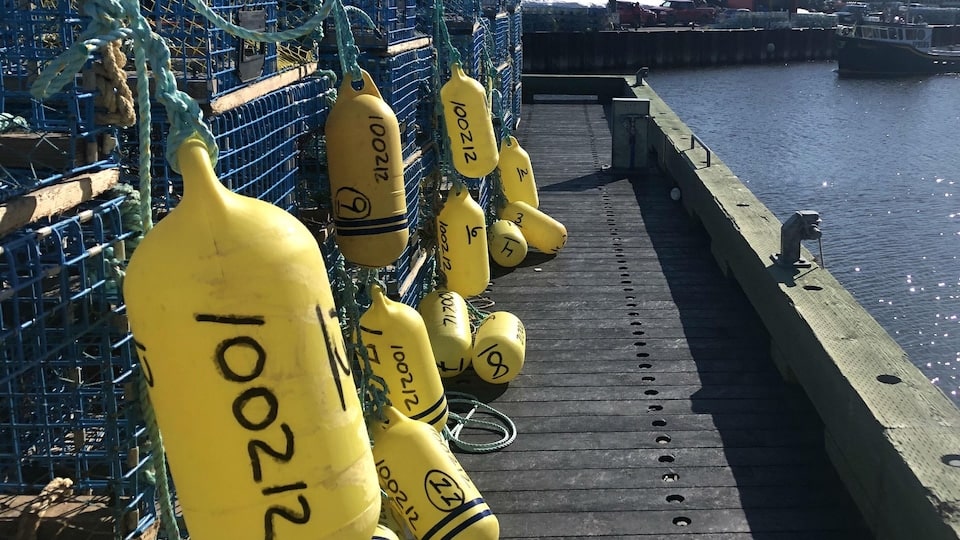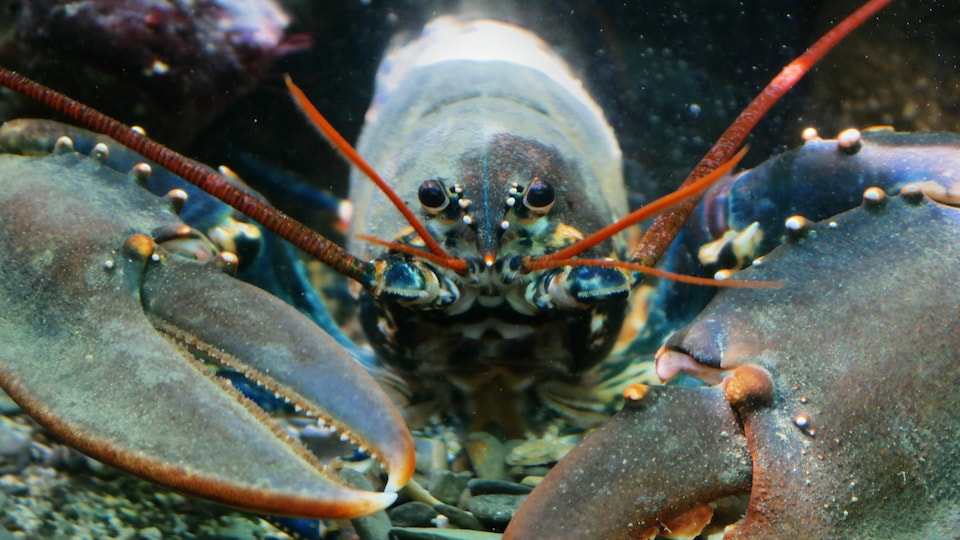The First Nation launched its experimental lobster fishing season this week between Rivière-à-Claude and the Tartigou River, west of Saint-Ulric, near Matane. The first traps were identified on Tuesday.
For the past five years, four boats, three of which belong to the First Nation, have been authorized to fish lobster in this area, where a new commercial fishery could emerge in a few years.
However, poaching is increasingly disrupting scientific fishing activities, which is hampering the transition to sustainable fishing activities, despite the collection of favorable data by the Aboriginal community.
An area under scientific assessment
The objective of an experimental fishery is to verify three elements, namely the abundance of the resource, its distribution and its productivity. The analysis of fishermen’s catches makes it possible, for example, to assess the number of juveniles, females, average size, etc.
It’s a demanding fishery, it’s a directed fishery, in the sense that we don’t drop the fishing gear where we want
explains Guy-Pascal Weiner, Director of Commercial Fisheries for the Wolastoqiyik Wahsipekuk First Nation.
All these data, explains Guy-Pascal Weiner, will make it possible, among other things, to determine whether it is lobster that lives in the area or is in the migratory phase. Based on all the juveniles we captured, all the egg-bearing females we captured and released, there is reason to believe that lobsters in Haute-Gaspésie and Matanie part of a local population that spends its entire life cycle there
says the manager.
As elsewhere in Gaspésie, fishing is spread over 10 weeks.
For seven weeks, the traps are released according to determined longitudes and latitudes. Then, the fishermen have three weeks to fish in the places that seem to them the most promising.
Despite the constraints, fishing is interesting, observes Guy-Pascal Weiner: The catches are abundant and we hope for a progression, slowly but surely, towards a commercial status.
Lobster is therefore indeed present in Matanie and Haute-Gaspésie. With the population explosion of this species, we can say that the lobster occupies a fairly large slice of the coast and not only at a low rate.
assures Guy-Pascal Weiner.
He also hopes that the experimental fishing of 2022 will be the last. Although there are still some uncertainties around a few elements, we have done everything, he says, to respond to the three scientific issues.
Unassessed samples
Guy-Pascal Weiner would like to move into exploratory fishing in 2023 and then quickly reach a commercial stage.
However, the fishers of the Wolastoqiyik Wahsipekuk community are not the only ones to observe the increase in the range of lobster. Poachers too.
This illegal fishing alters the data on the state of the stocks. Each poached lobster, each stolen lobster carries with it important biological data beyond abundance, distribution and productivity.
argues Guy-Pascal Weiner.
The manager notes that unlike southern Gaspésie, where lobster fishing is well established, residents and tourists in Haute-Gaspésie and Matanie do not seem to know that lobster fishing is prohibited.
Others, he adds, are very organized thieves, very aware of their actions: We have the whole palette!
The unevaluated harvest of organized poachers or weekend adventurers has monetary consequences for the First Nation, but also for the entire coastal community.
” The orange buoys belong to someone. This someone is doing an experimental fishery that might just disappear. »
Guy-Pascal Weiner recalls that fishing already generates benefits and creates or consolidates jobs whether on the boat, on the quays or in the factories: Indirectly, immediately, it slows down all the economic influence of this fishery at the commercial level.
At the commercial stage, the permits will not only be for the fleet of the indigenous community, but also for that of the coast, adds Guy-Pascal Weiner.
The lobsters caught by the First Nation are landed in Matane, Tourelle and Cap-Chat. They are processed in factories in the region, notably at Cusimer in Saint-Maxime-du-Mont-Louis and at Pêcheries de l’estuaire in Rimouski.
Reference-ici.radio-canada.ca

